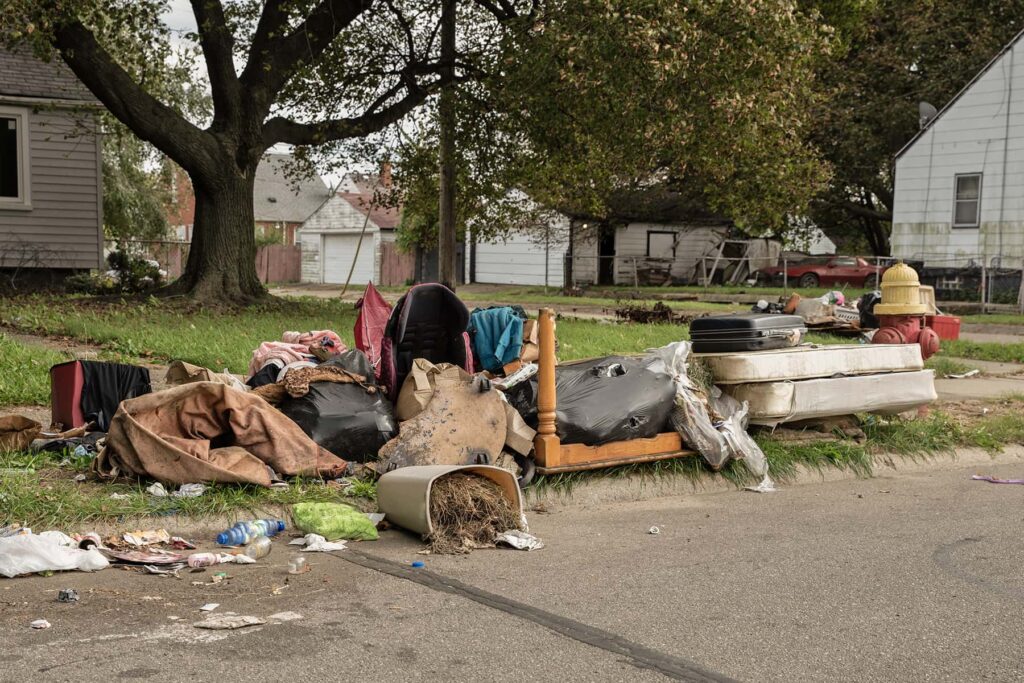A sweeping policy shift proposed by the Trump administration could upend the lives of millions of low-income American families, as federal officials push to impose a two-year limit on housing assistance programs administered by the U.S. Department of Housing and Urban Development (HUD). The proposal has sparked widespread alarm, particularly among working families who depend on long-term subsidized housing to stay afloat amid the country’s intensifying affordability crisis.
For Havalah Hopkins, a single mother in Woodinville, Washington, the idea is more than political it’s deeply personal.
“This isn’t just policy. This is my home. This is my son’s stability,” Hopkins said tearfully, surrounded by birthday decorations she put up for her 14-year-old autistic son.
Hopkins, 33, earns $18 an hour working inconsistent catering gigs across Seattle, supplementing her income with tips and delivery fees. It’s just enough to afford the $450 monthly rent on her government-subsidized apartment. Without the housing voucher, she says, the $2,000 market-rate rents in the area would leave her and her son homeless.
The Trump administration argues that HUD assistance has strayed from its intended purpose of temporary support. HUD Secretary Scott Turner defended the proposed two-year cap in a recent congressional hearing, saying, “HUD assistance is not supposed to be permanent. We’re correcting a system plagued by waste and dependency.”
But critics say this shift ignores the lived reality of millions of families for whom stable housing is the key to escaping poverty not a reward for having already done so.
Massive Impact, Uncertain Future
According to a new study from New York University’s Housing Solutions Lab, obtained exclusively by the Associated Press, more than 1.4 million households could lose their HUD housing benefits if the time limits are implemented. The analysis, the first of its kind, found the policy would disproportionately impact working families with children households already under severe financial pressure.
Researchers noted that about 70% of the affected households have already lived in HUD-supported housing for more than two years, and nearly half of HUD beneficiaries are exempt from the proposed limits due to age or disability.
“This policy would lead to substantial disruption and dislocation,” said Claudia Aiken, a co-author of the study. “Time limits would pull the rug out from under the very people HUD was designed to support.”
The findings are echoed by housing advocates, tenants, and even landlords, who warn that the abrupt change could lead to mass evictions, destabilize families, and reduce participation in HUD’s voucher programs. Some property owners already say they’re reconsidering contracts with HUD amid growing uncertainty.
A System Under Strain
The policy comes as the U.S. faces a historic housing shortage, with rising rents and waitlists for public housing stretching for years. From 2010 to 2020, more than 50,000 landlords exited the Section 8 voucher program, and agencies across the country, including in Seattle and Atlanta, are scaling back due to expected federal cuts.
“I’m afraid,” Hopkins admitted. “This home gave me a chance to breathe again. It helped me escape abuse, rebuild, and dream for the first time in years.”
Now, she says, the dream is in jeopardy.
A refrigerator magnet in her apartment displays a letter from the King County Housing Authority notifying residents of the looming policy debate. Her backup plan, if the rule passes? “There isn’t one,” she said. “Just packing a van and hoping for a miracle.”
Real Lives, Real Consequences
A few states away in Louisville, Kentucky, 28-year-old single mother Aaliyah Barnes is also at risk. She recently secured stable housing through a Section 8 voucher after joining a local support program while pursuing a nursing degree.
“For the first time, my son has his own room,” Barnes said, describing the educational play area she set up for her three-year-old. “But I won’t graduate in two years. If this policy goes through, we’ll lose everything just before the finish line.”
Lawmakers are divided. While HUD officials maintain that the change would reduce dependency and open access for others on waitlists, opponents argue it’s a false economy.
“There is no evidence this saves money or helps families,” said Rep. James Clyburn (D-SC). “It creates chaos, financial uncertainty, and pushes working families deeper into crisis.”
Landlords in Limbo
Even private landlords are voicing opposition, citing risks to long-term rental income and tenant stability. “We rely on these contracts to ensure occupancy,” said Brad Suster, who owns dozens of HUD-funded units in the Chicago area. “If tenants are kicked out every two years, we’re looking at high turnover and rising costs.”
Denise Muha, executive director of the National Leased Housing Association, echoed the concern: “Nobody wants to throw tenants out without cause. This policy makes no practical sense.”
A Fragile Future
Despite mounting criticism, HUD remains firm. Spokesperson Kasey Lovett insisted that “long-term assistance without incentive disincentivizes able-bodied Americans to work,” citing internal employment data from HUD-subsidized households.
But for Hopkins and millions like her, the fear is not about a lack of ambition it’s about losing the foundation they’ve worked hard to build.
“We all can’t become doctors in two years,” she said. “But that doesn’t mean we don’t deserve a place to live while we try.”
As Congress debates HUD’s 2026 budget this week with no time limits included yet the fate of the proposal remains uncertain. But for families across the country, the countdown has already begun.


